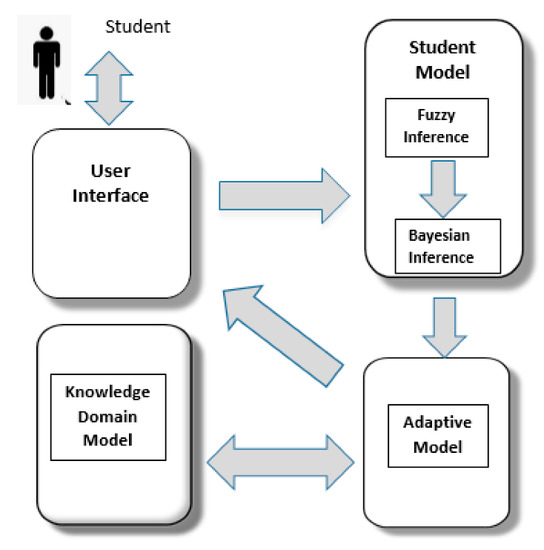Bioinformatics Tutor Things To Know Before You Get This
Bioinformatics Tutor Things To Know Before You Get This
Blog Article
8 Easy Facts About Bioinformatics Tutor Explained
Table of ContentsThe Basic Principles Of Bioinformatics Tutor Everything about Bioinformatics TutorNot known Facts About Bioinformatics TutorThe Greatest Guide To Bioinformatics TutorHow Bioinformatics Tutor can Save You Time, Stress, and Money.
Of the total individuals associated with the training, 80% were trainees from public higher education organizations, while the remaining 20% originated from exclusive establishments. To receive a certificate of involvement, trainees were called for to participate in at the very least 90% of the overall training hours. As a result of this requirement, an impressive 95% of the participants successfully obtained their certifications, having not only fulfilled the minimum presence standards yet also finished all designated tasks throughout the training.
Throughout the height of the COVID-19 pandemic, especially in between June and August 2020, the project group was entrusted with organizing specialized training in bioinformatics. This training was specifically aimed at trainees from the study group Center for Study in Applied Computer at the Federal University of Pará (UFRA) The adaptation to remote understanding platforms because of the pandemic developed an opportunity to check out brand-new training methodologies and digital devices that boosted both reach and effectiveness.
This course was made to offer an accessible yet thorough summary of Artificial Knowledge techniques, specifically as applied in bioinformatics (Bioinformatics Tutor). This digital style made it possible for involvement from students throughout Brazil, several of whom may not have had the opportunity to participate in in-person sessions.
The Best Guide To Bioinformatics Tutor
A notable function of this training course was its emphasis on hands-on knowing. Around 50% of the complete training hours were committed to practical activities where trainees constructed intelligent designs and applications in a variety of clinical domain names, including genetics, molecular biology, and environmental data analysis. Commonly utilized structures and devices such as Spyder, Google Colab, Jupyter Notebooks, and Orange were integrated into the coursework. These platforms allowed trainees to involve in real-time information control, design training, and algorithm testing.
The training course brought in 80 participants in total. Sixty of them were affiliated with various greater education and learning organizations in the state of Pará, while the remaining twenty came from establishments found in five various other Brazilian states. This wide geographical representation highlighted the nationwide passion in bioinformatics and the growing demand for specialized abilities in this area. By introducing Expert system in a practical and pertinent context, the initiative offered to bridge the void in between theory and real-world application, giving trainees with a solid structure for future research or work in the field.
The training initiative developed part of a broader academic outreach initiative called the Bioinformatics when driving task. This project has, for many years, introduced lots of pupils to the world of bioinformatics and computational biology. The events held under this umbrella effort have actually taken location throughout numerous areas and years, as summed up in Table 1 (Checklist of occasions, places, years, and total numbers of students and trainers)
One of one of the most exceptional outcomes of the Bioinformatics on the Roadway campaign has been its contribution to the growth of decentralized study teams. Several of these groups, at first united by their engagement in training events, have considering that taken place to produce independent scientific research study in partnership with neighborhood scholastic institutions. The training not only promoted scientific reasoning within the context of bioinformatics yet additionally sparked collaborative connections that expanded past the training setting. These collaborations have led to enhanced regional scientific efficiency and added meaningfully to the development of the broader bioinformatics community in Brazil.
5 Easy Facts About Bioinformatics Tutor Shown
The job itself was conceptualized and arranged by MB and RR, that managed the planning and execution of each step. Lectures were delivered by a multidisciplinary group consisting of megabytes, FA, EF, KP, JS, DM, SN, LP, LG, RR, ih, and air conditioning. The same team, excluding IH and RR, additionally served as tutors for the practical training components. Financing for the project was provided with the give 88887.200562/ 2018-00 from CAPES. The authors prolong their thankfulness to everybody that contributed to the awareness of this task, whether directly or indirectly, considering that its inception.
The Federal College of Pará's Office of Research study (PROPESP/UFPA) additionally provided monetary assistance, especially for the production of the final manuscript. The writers proclaim no commercial or monetary conflicts of rate of interest that might have affected the research. All point of views and analyses expressed in this article are exclusively those of the writers and do not always mirror those of their respective institutions, the author, editors, or customers entailed in the magazine procedure.

Not known Factual Statements About Bioinformatics Tutor
From an instructional perspective, the mentor approach utilized in the training was intentionally interactive. Courses were carried out in a way that urged student engagement and conversation, exceeding rote memorization to explore how ideas are established, used in everyday life, and evaluated in academic settings. The training ideology concentrated on supporting both strong and battling trainees, giving personalized support, and building self-confidence through continual mentorship and patience.

Each team, including roughly 36 individuals, was supported by three coaches-- many of whom were postdoctoral researchers with specific competence. These advisors not only aided develop the team projects yet also facilitated their execution, guaranteeing that each research study inquiry was both appropriately challenging and appropriate. The goal was to supply a naturally realistic context that participants might discover through open-ended goals and accessibility to curated datasets.
For additional understandings right into the approach and end results of this project-based knowing technique, viewers are directed to S1 Text, that includes comprehensive descriptions of the instructional structure, examination techniques, and project styles utilized in the training sessions.
Bioinformatics Tutor Fundamentals Explained
Of the total amount participants entailed in the training, 80% were students from public greater education and learning organizations, while the continuing to be 20% came from exclusive institutions. To qualify for a certificate of engagement, students were called for to participate in at the very least 90% of the overall training hours. Especially, past the students that signed up in the training sessions, seven knowledgeable trainers got involved in delivering the training courses, while three committed study teachers worked with the total training process. Approximately 50% of the overall training hours were devoted to sensible activities where pupils developed intelligent versions and applications in a variety of scientific domains, including genes, molecular biology, and environmental data analysis. The training not just this article fostered clinical thinking within the context of bioinformatics however additionally triggered joint partnerships that extended beyond the training setting.
Report this page